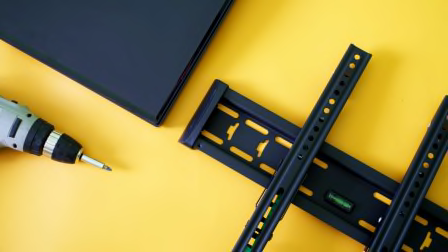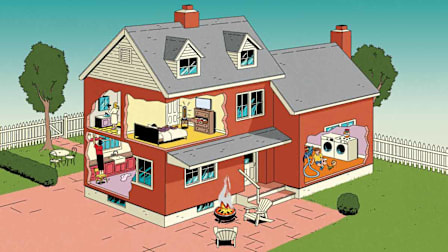Two Tip-Overs in One Week Highlight Continued Threat of Unstable Furniture
The incidents, including one death, occurred as Congress considers the STURDY Act, a bill meant to make furniture safer

After Janet McGee’s nearly 2-year-old son Ted was killed in 2016 when a dresser tipped over onto him, she vowed to do all she could to protect her other children. One step was anchoring every substantial piece of furniture in her home—even a plastic toy tool bench—to the wall.
So McGee was shocked when on March 12th, a two-drawer Trinell nightstand made by Ashley Furniture—which was anchored to the wall—fell over in her living room, narrowly missing her 3-year-old son Mason.
“We teach our kids not to climb on furniture but kids will be kids, and when Mason went to pull on the top drawer, the anchor popped out of the nightstand and it toppled over," says McGee, who helped found the group Parents Against Tip-Overs, which advocates for stronger stability requirements for furniture. “It happened so fast. Luckily he was able to jump out of the way and was not hurt, but I can’t help thinking about what would have happened if he hadn’t been able to move, or if my husband hadn’t been steps away from him—so many what-ifs.”
An Ongoing Threat, With or Without Anchors
Each year, an estimated 19,900 people go to the emergency room for injuries related to furniture tip-overs, and between 2000 and 2019, 351 people died from tip-overs involving furniture, according to a recent report from the CPSC.
The solution often proposed by furniture manufacturers is that consumers should anchor their furniture to the wall. But CR’s ongoing investigation, as well as McGee’s recent experience, shows that anchors are not a sufficient fix. Some renters aren’t allowed to make holes in the wall for anchors due to the terms of their lease, and many other people don’t know that anchors are needed to keep furniture from tipping over.
For example, 41 percent of people who have not used the anchors said one reason was that they thought their furniture seemed stable, according to a CR nationally representative survey (PDF) of 1,502 U.S. adults conducted in 2018
There are also many people who don’t have the skill to install wall anchors, and even for those people who do have the skill, like McGee, anchors don’t always hold. For instance, McGee anchored the nightstand, which was part of a juvenile bedroom set, with a metal anchor kit that she felt would be stronger than the plastic zip tie anchor that came with the nightstand. And because the back of the nightstand was made of particle board, she attached the anchor to the thicker top lip of the nightstand. But the anchor detached from the nightstand when it fell.
“I followed the directions of the anchor kit as best I could and made a reasonable judgment call about where to place the anchor on the furniture,” McGee says. “But this just really makes me question the whole anchor kit process even more. And I can’t stop thinking, ‘when can I stop worrying about a piece of furniture falling on my child again? When can we feel safe?’”
Ashley Furniture did not respond to CR’s request for comment but an employee did respond to McGee when she reported the incident to the company. The response McGee received stated that she had not used the anchor kit that was included with the nightstand and that she had installed the anchors differently than the instructions. Ashley also did not respond to CR’s question about whether the company had tested the nightstand to see if it complies with the voluntary stability standard for dressers, which currently exempts nightstands.
CR has also learned of circumstances where anchors have failed even when consumers used ones that came with the product. That was the case, captured on a baby monitor, when an anchored Ikea bookshelf tipped over onto twin toddlers who were spared from harm due to the way the bookshelf fell.
“We can’t rely on anchors,” says Nancy Cowles, executive director of Kids In Danger. “Had the furniture not tipped, the anchors would not have been tested and pulled out—so clearly, we need to develop more stable furniture that won’t tip under the weight of toddlers or 3-year-olds.”
The issue, echoes Knight, is not the anchors, but that dressers are not always built to be stable enough to resist tipping over when a child climbs or pulls on them. “There’s no way to tell if a dresser is more or less stable just by looking at it,” she says. “It’s critical to require strong safety testing before furniture is sold, and that should include tests accounting for real-world scenarios, such as when multiple drawers are open or when a child is pulling or climbing on a dresser.”
McGee puts it simply: “Anchoring is a Band-Aid to the real problem,” she says. “All these people told me after Ted died that I should’ve anchored my furniture, and guess what? I listened and learned my lesson, and this second tip-over still happened.”




















